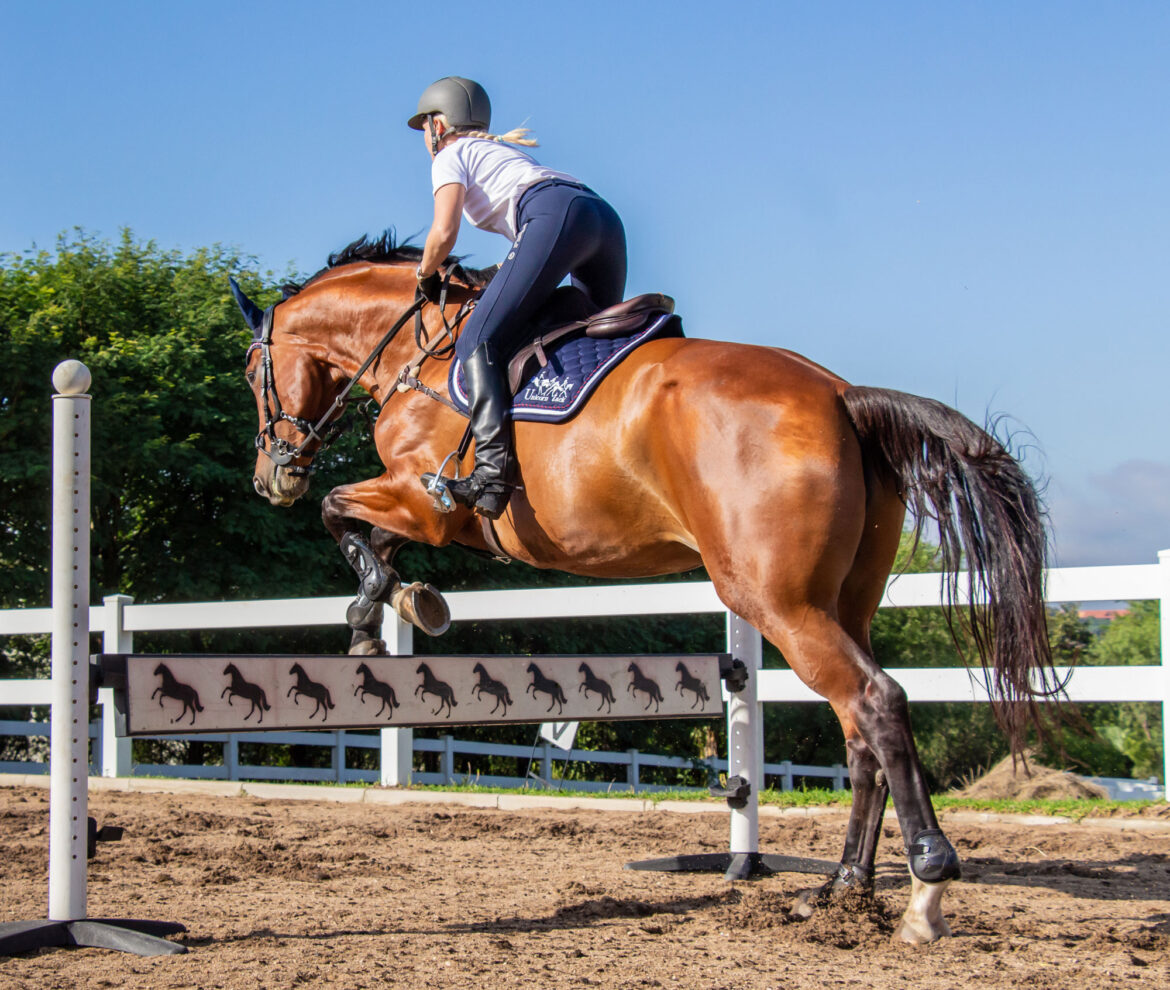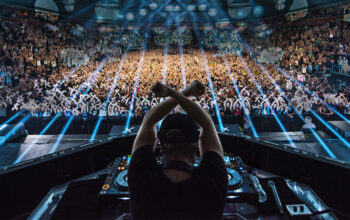All great jumpers have 2 qualities. First is the physical capability to get their bodies up into the atmosphere. Next is actually the mental combination of courage and a great desire to be very careful – reluctant to touch, let alone wallop, a rail. In the following paragraphs, I will address the first of these 2 qualities, but this’s not intended to diminish the second. Regardless of how much physical ability a horse has, if he’s not careful and brave, he will have very little success in the show ring. As six-time Olympic showjumper Frank Chapot says, there’s a delicate balance between being chicken and being brave, which all good trainers have to solve.
Click here to know more about horse jumps standards.
Trainers – and riders, too – must also understand the fundamental biomechanics of jumping – the rules of physics determining what a horse does mechanically with his body to create the force to propel it up and over a fence. These are generally the same for all horses. How well each horse works with his biomechanics depends on his conformation, just how much he weighs, and how strong and coordinated he’s. All of the levers in the body of his (the bones) need to be constructed and connected so that he can most effectively convert his forward momentum and muscle shortening into upward momentum. For jumps that are actually both wide and high, he needs to propel himself horizontally and vertically. This requires either speed or perhaps scope – the ability to jump wide with no a lot of speed.
What makes a horse a world-class jumper? You may be surprised to learn there is no perfect formula. Probably The best jumpers possess a mix of great strength and coordination, but just how they work with the bodies theirs to get from one side of a fence to the other varies from horse to horse. In certain instances, they compensate for a weakness with different strengths. In others, training and good riding help them overcome weaknesses.
In the following paragraphs, I will describe how your horse uses his various body parts when he jumps so you can help him as a rider – by being mindful of just how the weight of yours and position affect him at different phases of the jump and how your own flexibility and coordination can allow you to be a much better partner. As a trainer, understanding jumping biomechanics helps you determine what you can and cannot improve in a horse’s technique. It also can certainly be a helpful tool for diagnosing and preventing soundness problems.
I start with an elite jumper’s illustration going over an extremely high fence, like a puissance wall, since it is easiest to observe technique in such an exaggerated effort. Even at the Grand Prix level, most horses are actually jumping appreciably below their maximum capabilities. Most of those competing in the 1.55 meter (approximately five feet) classes have the potential to clear two meters (about 6-foot-7). The indoor puissance high jump record is actually 7-foot-10. Later, I will point out how a horse’s technique might be slightly different over smaller obstacles. I will also offer some conditioning and training tips for maximizing your horse’s soundness and performance.
The Approach
When approaching a huge jump, a horse gathers energy in preparation for the coming effort. He rounds the back of his to bring his hind legs farther underneath his body with each stride. This creates more impulsion (energy) and suspension in the gait. During the last few strides, he shifts his balance backward, concentrating the power in his hindquarters. Imagine coiling a spring before releasing it. The more he coils the body, the more forcefully he can get off over the jump.
To maximize this weight shift, the diagonal legs work in unison in a three-beat canter separate as the hind legs reach farther under the body, supporting more of its fat. The effect is actually an extremely collected gait with a four-beat, instead of a three-beat, rhythm. The footfall sequence is actually the same as that of a full gallop, but the speed is much slower, although it is not as slow as a dressage collected canter.
In contrast to common thinking, a horse doesn’t take equally measured strides all the way to the jump. He compresses the final stride before takeoff by several feet. Thus, for instance, if he’s averaging 13-foot strides in between the jumps, he will shorten this last approach stride to approximately nine feet. In that way, he decelerates the body, transferring his forward momentum into electricity for the vertical push-off. This energy is actually stored in his ligaments and tendons’ muscles, which stretch so much that his front fetlocks sink almost to the ground.
Although the hind legs furnish the primary power on takeoff, the forelegs are definitely more substantial at this moment than lots of people realize. The horse uses them similar to the way a pole vaulter uses the pole. In the previous approach stride, he lowers the withers of his and rotates his scapula (shoulder bone) backward under the flap of the saddle, extending the front legs of his in front of the body, preparing to plant them on the ground the way the pole vaulter plants the pole in the box.
Meanwhile, to best judge the fence he is approaching, the horse looks down his nose. If his head carriage is actually in more dressage like a flexed poll position between the fences, he will have to raise the hise of the last minute to find a much better view of the jump.
The Takeoff
The front feet arrive at takeoff separately, with the nonleading foreleg absorbing the majority of the force. Thus, for instance, if the horse is actually on his left lead, his right foreleg will contact the ground at the takeoff spot first and push off first. As both front feet are actually grounded, he lowers his head. He bends his elbow’s shoulder and fetishes joints, essentially shortening the front legs and bringing the body of his closer to the ground, storing elastic energy for the jump.
The momentum of his then carries the bodyweight of his over his front legs, just how a pole vaulter swings over his planted pole.
As the front legs have the ground, the loaded muscles, tendons, and ligaments release their stored energy, much the way a stretched rubber band snaps back into place when it’s published. The faster and more powerfully a horse loads the front legs, the higher the vertical slam off the ground on takeoff. He coordinates the elastic rebound release with the muscle contractions that straighten the front legs of his, extending the shoulder of his elbow and fetlock joints. The most important is actually the triceps muscle, located behind and above the elbow, which straightens the elbow joint (this may be the same muscle on the back of the arm) of yours and the muscles that rotate the top of the shoulder blade forward.
Whether you are riding or perhaps watching jumping horses from the sidelines, observing different styles could be fascinating. The info I have shared here was derived through many decades of observation combined with top riders’ insight and illuminating scientific studies. But we have a good deal more to find out!
Click here to get the best horse jumps for sale.




